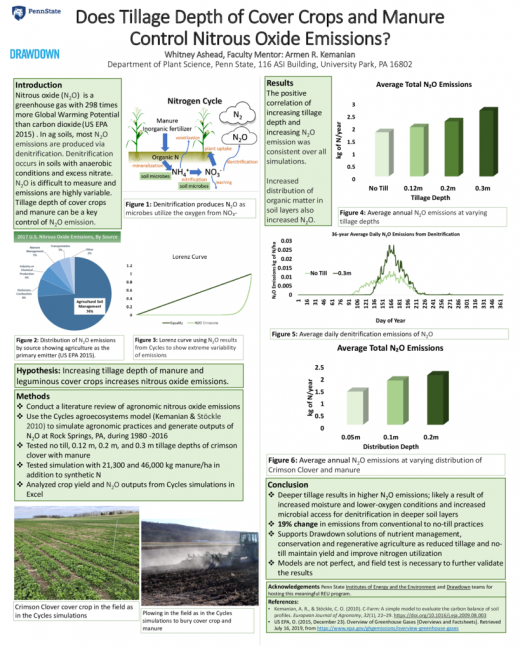Nitrous oxide is a greenhouse gas with 298 times more warming potential than carbon dioxide, causing it to be a major contributor to global warming and depletion of the stratospheric ozone. A large portion of nitrous oxide emissions occur in agriculture, primarily in saturated or low-oxygen soil conditions with excess nitrogen. Nitrous oxide is challenging to measure and there is little data that illustrates the effects of cover crops and livestock manure on nitrous oxide emissions. To study this, we used a computer simulation model, Cycles, that generates nitrous oxide outputs dependent on the soil, crop, climate, tillage, or season inputs. Using the model, we virtually planted cover crops, applied manure, and then changed the depth at which both were tilled into the soil. The simulation ran for 37 years in Pennsylvania conditions with historic weather data and Hagerstown soils. We found that shallower tillage of crimson clover cover crops and livestock manure reduced the nitrous oxide outputs without changes to the yield. It is important to note that there is also a potential for high nitrous oxide emissions that the Cycles model is unable to detect. With these results, we can assess minimum tillage for improved nitrogen management and reduction of nitrous oxide emissions.
Day
Monday Poster Session
Related Conference Themes
Food


